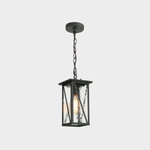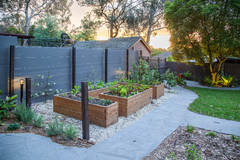Gardening Guides
Flowers and Plants
What to Do After Spring Bulbs Have Bloomed
Here’s how to care for daffodils, tulips, hyacinths and other bulbs when they’re done blooming
Once flowers and foliage fade on daffodils, tulips and other spring-blooming bulbs, do you leave them in the ground or dig them up? In short, it depends on bulb variety and whether you’re treating the bulbs as annual or perennial plants. Read on to learn how to take care of bulbs after they finish blooming.
Need a pro for your landscape design project?
Let Houzz find the best pros for you
Let Houzz find the best pros for you
Tulips are most often planted as annuals, as it’s tricky to get them to bloom again in a container or in the garden.
Lift bulbs. After the bloom finishes and foliage begins to fade, use a garden fork to lift bulbs planted in the ground or a trowel to dig up container-planted bulbs, and add them to the compost pile.
Lift bulbs. After the bloom finishes and foliage begins to fade, use a garden fork to lift bulbs planted in the ground or a trowel to dig up container-planted bulbs, and add them to the compost pile.
After-Bloom Care for Spring-Blooming Bulbs Grown as Perennials
Some bulb varieties are more likely to naturalize and rebloom for many seasons, spreading by bulblets (small, baby bulbs that form at the base of the parent bulb) or seeds to form a larger clump of bulbs next year. Perennial bulbs include daffodils, crocus, muscari, snowdrops and scilla, as well as alliums and hyacinths, to some degree. Tulips, depending on variety and climate, can repeat bloom, but they’re less predictable.
Some bulb varieties are more likely to naturalize and rebloom for many seasons, spreading by bulblets (small, baby bulbs that form at the base of the parent bulb) or seeds to form a larger clump of bulbs next year. Perennial bulbs include daffodils, crocus, muscari, snowdrops and scilla, as well as alliums and hyacinths, to some degree. Tulips, depending on variety and climate, can repeat bloom, but they’re less predictable.
1. Deadhead flowers. Cut back the flowers of daffodils, repeat-blooming tulips and hyacinths once they begin to fade, cutting from the base of the flower stem. This will encourage the bulb to begin pulling energy back from the leaves. Let the flowers of allium and smaller bulbs, such as muscari and snowdrops, fade on the plant (don’t deadhead).
2. Allow foliage to die back. Since bulbs reabsorb nutrients from their leaves to supply energy for next year’s growth, it’s best to wait until leaves have become entirely yellow and limp before removing them. You can tie up or braid the fading foliage for a neater look or — on a larger scale — plant leafy perennials like hosta to grow in and cover the yellowing bulb foliage.
Shop for gardening tools on Houzz
2. Allow foliage to die back. Since bulbs reabsorb nutrients from their leaves to supply energy for next year’s growth, it’s best to wait until leaves have become entirely yellow and limp before removing them. You can tie up or braid the fading foliage for a neater look or — on a larger scale — plant leafy perennials like hosta to grow in and cover the yellowing bulb foliage.
Shop for gardening tools on Houzz
After-Bloom Bulb Care by Plant Variety
Daffodils. Daffodils (Narcissus spp.) can be grown either as annuals or perennials. For those grown in the ground, most repeat flower (depending on variety and climate). Some varieties, such as ‘Erlicheer’, ‘Dutch Master’, ‘Mount Hood’ and others, repeat flower and naturalize (naturally spread) to form drifts.
Daffodils. Daffodils (Narcissus spp.) can be grown either as annuals or perennials. For those grown in the ground, most repeat flower (depending on variety and climate). Some varieties, such as ‘Erlicheer’, ‘Dutch Master’, ‘Mount Hood’ and others, repeat flower and naturalize (naturally spread) to form drifts.
Landscape designer David Hoxie of Chicago-based Greenhaven Landscapes shares his post-bloom care regimen for clients: “Daffodils are deadheaded, then greens are left to turn yellow and return energy back to the bulb before being removed,” he says.
Hoxie’s team ties up the foliage of daffodils that have been deadheaded for clients with smaller gardens. “Otherwise it is too time-consuming,” he says. In larger gardens they will push down and conceal the daffodil foliage behind other plants once they begin to fade, waiting to remove them until the leaves are completely yellow.
Hoxie’s team ties up the foliage of daffodils that have been deadheaded for clients with smaller gardens. “Otherwise it is too time-consuming,” he says. In larger gardens they will push down and conceal the daffodil foliage behind other plants once they begin to fade, waiting to remove them until the leaves are completely yellow.
Tulips. As mentioned earlier in the article, tulips are primarily treated as annuals and planted fresh each year. Generally, when tulip bulbs get large enough to produce a showy flower, they’ll split after the spring bloom. The following spring, the split bulb usually doesn’t rebloom or, if it does, it will produce a smaller flower.
‘Darwin’ and ‘Emperor’ hybrid tulips may be more likely to repeat bloom or naturalize in gardens. Hoxie says tulips in a few of his clients’ gardens return each year and have naturalized, but most are treated as annuals and replanted annually.
‘Darwin’ and ‘Emperor’ hybrid tulips may be more likely to repeat bloom or naturalize in gardens. Hoxie says tulips in a few of his clients’ gardens return each year and have naturalized, but most are treated as annuals and replanted annually.
Alliums. Most alliums are treated as perennials, as they have a good chance of repeat-blooming in most climates. Bloom size can decrease in a few years, however.
Skip deadheading with alliums and allow the flowers to dry on the stalk and the seeds to mature. “Leave alliums be until the globe flower dries and the stem has pushed all energy back into the bulbs for next year,” Hoxie says.
Note: Alliums’ large leaves can be difficult to hide as they start to yellow. This can be a reason for planting alliums among shrubs like roses or hydrangea or taller mixed perennial borders with foliage that can conceal the fading allium.
Skip deadheading with alliums and allow the flowers to dry on the stalk and the seeds to mature. “Leave alliums be until the globe flower dries and the stem has pushed all energy back into the bulbs for next year,” Hoxie says.
Note: Alliums’ large leaves can be difficult to hide as they start to yellow. This can be a reason for planting alliums among shrubs like roses or hydrangea or taller mixed perennial borders with foliage that can conceal the fading allium.
Hyacinths. Like alliums, hyacinths may bloom for multiple years, but the size of the flower can decrease. In some areas they’re treated like perennials, at least for a few seasons; in others, hyacinths are used as annuals.
Muscari. Muscari, also called grape hyacinth, and many other smaller bulbs spread by seeds as well as underground bulblets. Leaving both the spent flowers and the foliage on the plant is essential for seed formation and nutrient absorption back to the bulb. Treat muscari as perennials, and hold back on deadheading — good news, really, since the flowers are so small.
Snowdrops. Like muscari, snowdrops (Galanthus spp.) multiply by seed as well as bulblets and form larger clumps year after year. Treat them as perennials, leaving the bulbs in the ground, and skip deadheading to encourage seed formation.
This pair of spring bulb containers in Illinois features forced tulips that will be discarded when the pots are replanted for summer.
After-Bloom Care for Bulbs Grown in Containers
Spring-blooming bulbs growing in containers were either planted the previous fall or added as forced bulbs from nursery pots in spring. Forced bulbs, depending on their variety and your climate, are used as annuals and may rebloom if planted out in beds, but it’s not a sure thing. You may have more luck with planting out bulbs that had not been forced (planted in fall).
If you’d like to try, deadhead the flowers of daffodils, tulips or hyacinths and tie up the foliage while you allow it to die back. Then, lift bulbs, withered foliage and all, and plant out in garden beds.
Find pots and planters in the Houzz Shop
After-Bloom Care for Bulbs Grown in Containers
Spring-blooming bulbs growing in containers were either planted the previous fall or added as forced bulbs from nursery pots in spring. Forced bulbs, depending on their variety and your climate, are used as annuals and may rebloom if planted out in beds, but it’s not a sure thing. You may have more luck with planting out bulbs that had not been forced (planted in fall).
If you’d like to try, deadhead the flowers of daffodils, tulips or hyacinths and tie up the foliage while you allow it to die back. Then, lift bulbs, withered foliage and all, and plant out in garden beds.
Find pots and planters in the Houzz Shop
Tell us: How do you treat bulbs after blooming in your climate? Share your advice in the Comments.
More on Houzz
Read more spring gardening content
Find a landscape designer on Houzz
Shop for outdoor products
More on Houzz
Read more spring gardening content
Find a landscape designer on Houzz
Shop for outdoor products


















Although most spring-flowering bulbs are “perennials,” horticulturally speaking, as they come back year after year, many people treat bulbs as “annuals,” planting new ones each year.
This decision makes sense in some cases, since not all bulbs reliably bloom year after year, and not all climates and growing conditions support repeat flowering. Plus, many people enjoy the flexibility of being able to try new bulb varieties or color palettes every year.